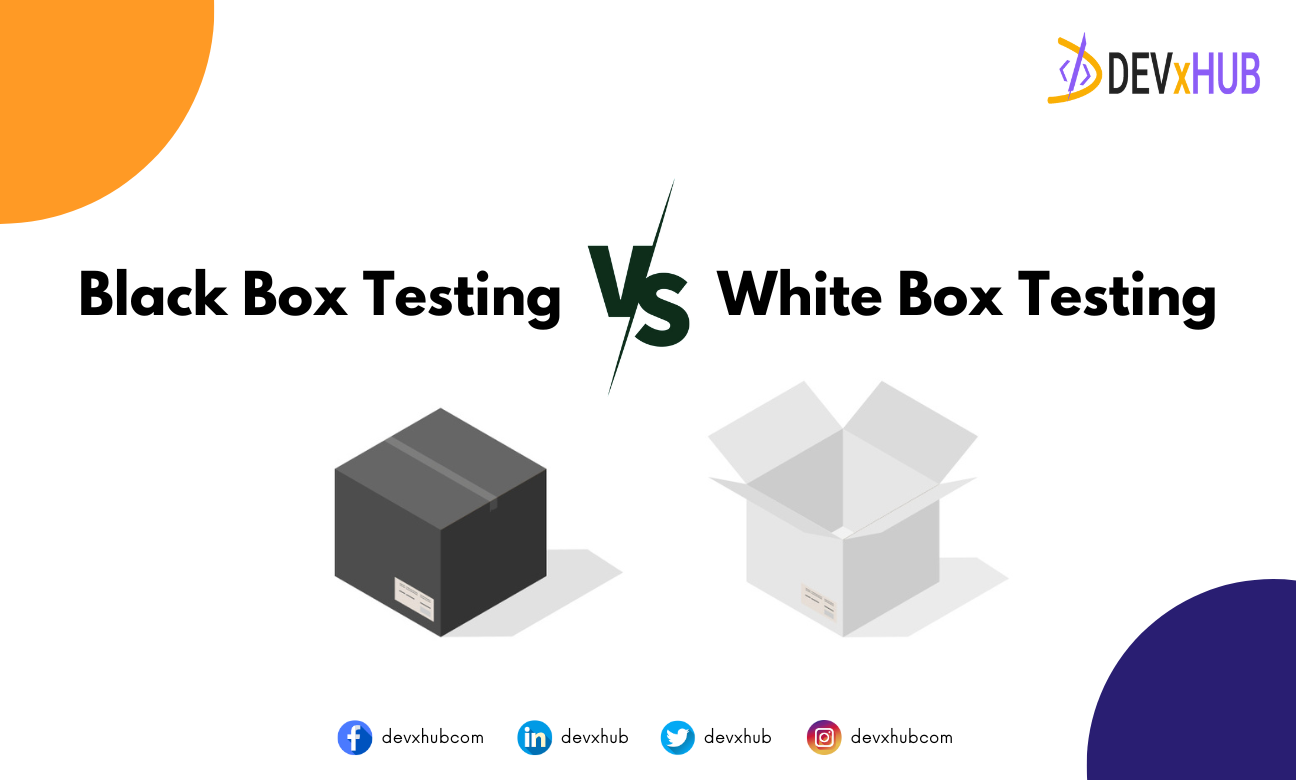Blog - Black Box Testing vs White Box Testing: Understanding Key Differences
In the realm of software development, ensuring the reliability and functionality of software is paramount. Two fundamental approaches to testing software are Black Box Testing and White Box Testing. Each method offers unique advantages and is suited to different testing scenarios. This blog delves into the key differences between these two approaches, shedding light on their methodologies, applications, advantages, and limitations.
What is Black Box Testing?
Black Box Testing, also known as Behavioral Testing, is a method where the tester evaluates the functionality of the software without peering into its internal structures or workings. The focus is on what the software does, not how it does it. Testers use this technique to assess if the software meets the specified requirements and behaves as expected under various conditions.
Key Features of Black Box Testing:
- – External Perspective: Testers do not need knowledge of the programming languages or the internal code structure.
- – User-Focused: It simulates real-user scenarios and evaluates the software’s external behavior.
- – Functionality Verification: Ensures that all functionalities work as intended by the specifications.
What is White Box Testing?
White Box Testing, or Structural Testing, involves looking inside the ‘box’ or the code to examine the internal structures and workings of the software. This approach requires a detailed understanding of the code, as testers need to verify the flow of inputs and outputs through the application, ensuring that the internal operations perform as expected.
Key Features of White Box Testing:
- – Internal Perspective: Requires knowledge of the code, architecture, and implementation.
- – Code Coverage: Aims to test all possible paths, loops, and branches in the code.
- – Early Detection: Helps in identifying vulnerabilities and logical errors at an early stage.
Differences Between Black Box and White Box Testing
1. Knowledge of Internal Workings
- – Black Box: No knowledge of the internal code is required.
- – White Box: Detailed knowledge of the internal code is necessary.
2. Focus and Approach
- – Black Box: Focuses on the functional requirements of the software.
- – White Box: Concentrates on the internal logic and structure of the code.
3. Test Creation
- – Black Box: Test cases are derived from specifications and requirements.
- – White Box: Test cases are created based on code structures and programming paths.
4. Skills Required
- – Black Box: Requires analytical and logical skills along with an understanding of the end-user requirements.
- – White Box: Demands programming skills and a deep understanding of the software’s internal architecture.
5. Types of Errors Detected
- – Black Box: Identifies discrepancies between the software’s actual functionality and its expected behavior.
- – White Box: Uncovers hidden errors within the code, such as logical errors, dead code, and loop errors.
When to Use Black Box vs. White Box Testing
- – Black Box Testing is most effective when validating the overall software functionality and ensuring it meets user requirements. It’s particularly useful in the later stages of development and for acceptance and system testing.
- – White Box Testing is ideal for early development stages, enabling developers to catch and correct errors in the codebase before they escalate. It’s suited for unit testing, integration testing, and ensuring secure code.
Advantages and Limitations
Black Box Testing
- – Advantages: Simulates real-user scenarios, requires no code knowledge, and focuses on software functionality.
- – Limitations: Limited scope due to lack of internal perspective, potentially missing specific internal vulnerabilities.
White Box Testing
- – Advantages: Allows for comprehensive testing including all paths, enables early detection of errors, and secures the code.
- – Limitations: Requires in-depth programming knowledge, can be time-consuming, and might not adequately assess user experience.
Conclusion
Both Black Box Testing and White Box Testing are integral to a robust software testing strategy. The choice between them depends on the specific objectives of the testing phase, the resources available, and the stage of the software development lifecycle. By understanding and applying these two complementary approaches effectively, developers and testers can ensure that software products are both functional and reliable, meeting the high standards expected by users and stakeholders alike.
Related Posts
Categories
- App Development (2)
- Design (2)
- DEVxHUB (30)
- Digital Marketing (2)
- Guide (24)
- It Bangladesh (1)
- Logo design (1)
- Operating system (1)
- Personal Improvement (14)
- Planning (4)
- Project management (3)
- Social media (2)
- Software Development (5)
- Software Quality Assurance (8)
- Startups (1)
- Team work (1)
- UI UX (1)
- Web Development (6)
Main Tags
- 2024
- Android
- app development
- bangladesh
- content writing
- design
- devxhub
- Digital marketing
- Guide
- IOS
- It
- logo design
- Operating system
- Personal Improvement
- planning
- project management
- social media
- Software Development
- Software Quality Assurance
- software testing
- software testing types
- Startups
- Success
- team
- UI UX
- UI UX design
- VR
- Web Development















